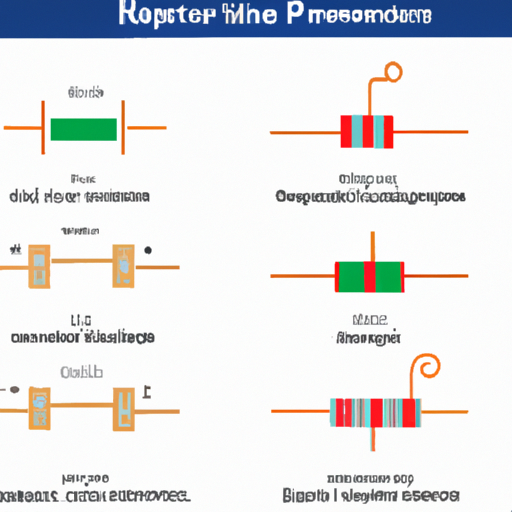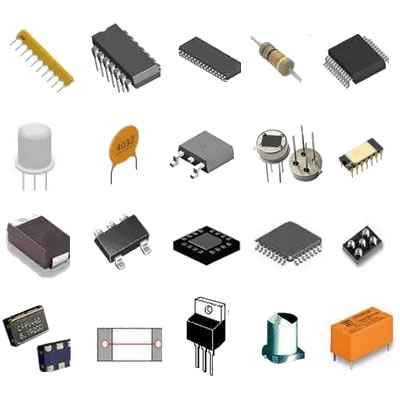What Product Types are Included in Resistor Wiring?
I. Introduction
A. Definition of Resistor Wiring
Resistor wiring refers to the integration of resistors into electrical circuits to control the flow of current. Resistors are passive components that limit the amount of current that can pass through a circuit, thereby protecting sensitive components and ensuring proper functionality. They are essential in various applications, from simple electronic devices to complex industrial machinery.
B. Importance of Resistor Wiring in Electrical Circuits
In electrical circuits, resistors play a crucial role in managing voltage and current levels. They help in dividing voltages, setting bias points in transistors, and controlling signal levels. Without resistors, circuits would be prone to overloads, leading to component failure and potential hazards. Thus, understanding the types of resistors and their applications is vital for anyone involved in electronics.
C. Overview of the Article
This article will explore the different product types included in resistor wiring, including fixed, variable, and specialty resistors. We will also discuss their applications, factors to consider when selecting resistors, installation techniques, and future trends in resistor technology.
II. Understanding Resistors
A. What is a Resistor?
1. Function and Purpose
A resistor is an electronic component that resists the flow of electric current. Its primary function is to limit current, divide voltages, and dissipate energy in the form of heat. Resistors are characterized by their resistance value, measured in ohms (Ω), which determines how much they resist current flow.
2. Basic Principles of Resistance
The basic principle of resistance is governed by Ohm's Law, which states that the current (I) flowing through a conductor between two points is directly proportional to the voltage (V) across the two points and inversely proportional to the resistance (R) of the conductor. This relationship is expressed as:
\[ V = I \times R \]
Understanding this principle is fundamental for designing and troubleshooting electrical circuits.
B. Types of Resistors
Resistors can be broadly categorized into three types: fixed, variable, and specialty resistors.
1. Fixed Resistors
Fixed resistors have a constant resistance value and are widely used in various applications. They come in several subtypes, including:
Carbon Composition Resistors: Made from a mixture of carbon and a binding material, these resistors are known for their high energy absorption and are often used in high-power applications.
Metal Film Resistors: These resistors are made by depositing a thin layer of metal onto a ceramic substrate. They offer better stability and tolerance compared to carbon composition resistors, making them suitable for precision applications.
Wirewound Resistors: Constructed by winding a metal wire around a ceramic core, wirewound resistors can handle high power levels and are often used in power supplies and audio equipment.
Thick and Thin Film Resistors: Thick film resistors are made by printing a resistive material onto a substrate, while thin film resistors are created using a similar process but with a thinner layer. Both types are used in applications requiring high precision and stability.
2. Variable Resistors
Variable resistors allow for adjustable resistance values, making them versatile components in electronic circuits. Common types include:
Potentiometers: These are three-terminal devices used to adjust voltage levels in a circuit. They are commonly found in volume controls and other adjustable settings.
Rheostats: Similar to potentiometers but typically used for higher power applications, rheostats can adjust current flow in circuits.
Trimmers: These are small potentiometers used for fine-tuning circuits, often found in calibration settings.
3. Specialty Resistors
Specialty resistors are designed for specific applications and include:
Thermistors: Temperature-sensitive resistors that change resistance with temperature variations. They are commonly used in temperature sensing and control applications.
Photoresistors: Also known as light-dependent resistors (LDRs), these resistors change resistance based on light exposure. They are often used in light-sensing applications.
Varistors: Voltage-dependent resistors that protect circuits from voltage spikes. They are commonly used in surge protectors.
Resistor Networks and Arrays: These consist of multiple resistors packaged together, allowing for compact designs in circuit boards.
III. Product Types in Resistor Wiring
A. Fixed Resistors
Fixed resistors are the backbone of resistor wiring, providing stable resistance values for various applications. Each subtype has its unique characteristics, making them suitable for different scenarios.
B. Variable Resistors
Variable resistors offer flexibility in circuit design, allowing engineers to adjust resistance values as needed. Their applications range from simple user interfaces to complex control systems.
C. Specialty Resistors
Specialty resistors are essential for specific applications that require unique characteristics, such as temperature sensitivity or light responsiveness. Their specialized functions make them invaluable in modern electronics.
IV. Applications of Resistor Wiring
A. Consumer Electronics
In consumer electronics, resistors are used in devices such as televisions, radios, and smartphones to control current and voltage levels, ensuring proper operation and safety.
B. Industrial Equipment
Industrial machinery relies on resistors for controlling motors, sensors, and other components, helping to maintain efficiency and prevent damage.
C. Automotive Applications
In vehicles, resistors are used in various systems, including engine control units, lighting, and infotainment systems, to manage electrical signals and protect sensitive components.
D. Telecommunications
Telecommunication devices utilize resistors to regulate signal levels, ensuring clear communication and preventing signal distortion.
E. Medical Devices
In medical equipment, resistors play a critical role in monitoring and controlling electrical signals, ensuring accurate readings and safe operation.
V. Factors to Consider When Choosing Resistor Wiring Products
When selecting resistors for a specific application, several factors must be considered:
A. Resistance Value
The resistance value must match the requirements of the circuit to ensure proper functionality.
B. Power Rating
The power rating indicates how much power a resistor can handle without overheating. Choosing a resistor with an appropriate power rating is crucial for preventing failure.
C. Tolerance
Tolerance refers to the allowable variation in resistance value. Selecting resistors with the appropriate tolerance ensures that the circuit operates within desired parameters.
D. Temperature Coefficient
The temperature coefficient indicates how much the resistance value changes with temperature. This is important for applications where temperature fluctuations are expected.
E. Size and Form Factor
The physical size and form factor of the resistor must fit within the design constraints of the circuit, especially in compact electronic devices.
VI. Installation and Wiring Techniques
A. Soldering Techniques
Proper soldering techniques are essential for ensuring reliable connections in resistor wiring. This includes using the right solder, maintaining appropriate temperatures, and ensuring clean surfaces.
B. PCB Mounting
Resistors can be mounted on printed circuit boards (PCBs) using through-hole or surface-mount techniques. Each method has its advantages and is chosen based on the design requirements.
C. Wiring in Series and Parallel Configurations
Resistors can be connected in series or parallel configurations to achieve desired resistance values. Understanding these configurations is crucial for circuit design.
D. Safety Considerations
When working with resistors, safety is paramount. This includes ensuring proper power ratings, avoiding overheating, and following best practices for handling electronic components.
VII. Conclusion
A. Recap of Product Types in Resistor Wiring
In summary, resistor wiring encompasses a variety of product types, including fixed, variable, and specialty resistors. Each type serves a unique purpose and is essential for the proper functioning of electrical circuits.
B. Importance of Selecting the Right Resistor
Choosing the right resistor is critical for ensuring circuit reliability and performance. Factors such as resistance value, power rating, and tolerance must be carefully considered.
C. Future Trends in Resistor Technology
As technology advances, we can expect to see innovations in resistor design and materials, leading to more efficient and compact solutions for modern electronics.
VIII. References
A. Suggested Reading
- "The Art of Electronics" by Paul Horowitz and Winfield Hill
- "Electronic Principles" by Albert Malvino and David Bates
B. Industry Standards and Guidelines
- IEC 60115: Resistors for use in electronic equipment
- EIA-198: Standard for Fixed Resistors
C. Online Resources for Further Learning
- Electronics tutorials on websites like All About Circuits and Electronics-Tutorials.ws
- Manufacturer datasheets for specific resistor products
This comprehensive overview of resistor wiring provides a solid foundation for understanding the various product types and their applications in electrical circuits. Whether you are a hobbyist or a professional engineer, knowledge of resistors is essential for successful electronic design and implementation.





